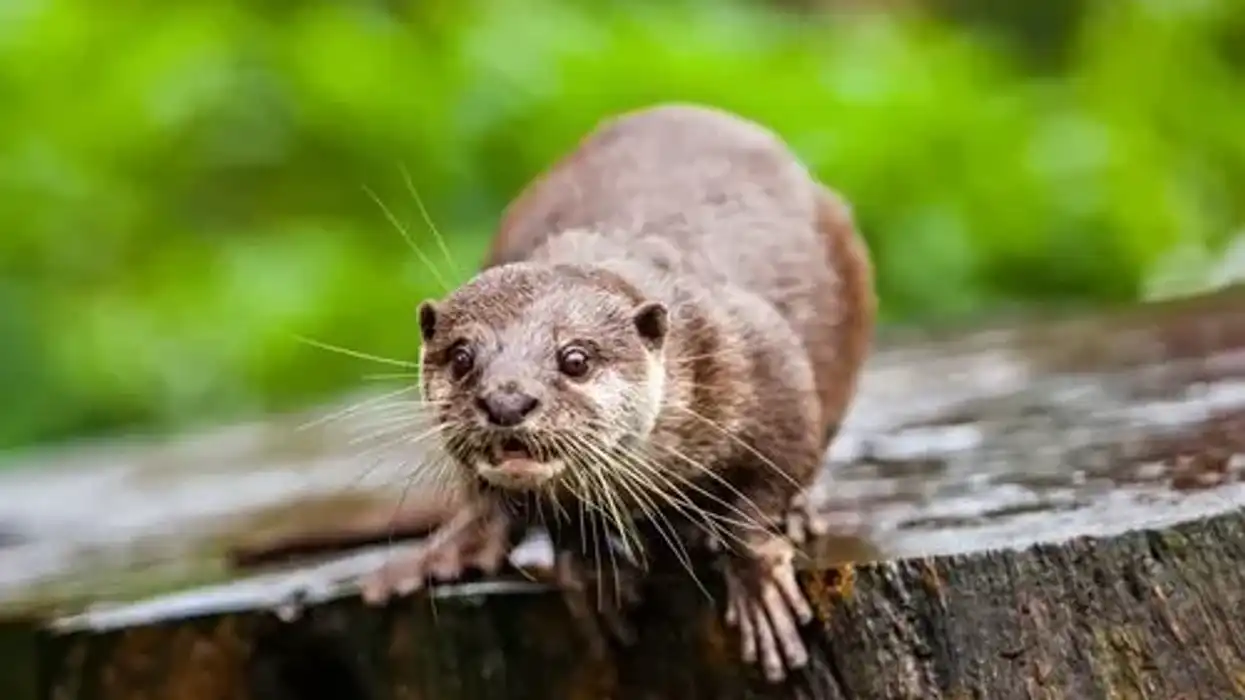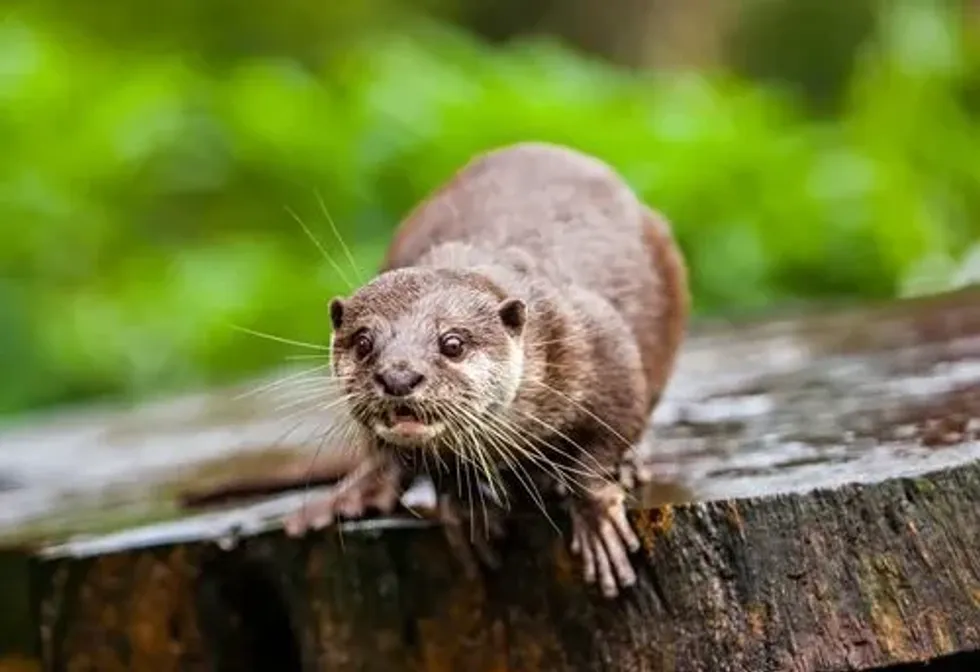The otter civet is a viverrid from the southern parts of Asia. They live partly in water and partly on land.
The species are mostly found in the countries like Thailand, near the Borneo and Sumatra region. This species is listed under the endangered category by IUCN. Considering this fact, there has been a decrease in the population trend of these small mammals of the family Viverridae.
The main reason behind this is the loss of habitat that includes a range of swamp forests covering the areas of Southeast Asia. In the past 15 years, there has been a 50% decrease in the population due to the mentioned reasons.
During the time of mating, the species usually communicate by releasing scents to attract the partner. The female gives birth to around two to three young ones in a single year. The breeding month is usually the summer months.
If you like reading about this, you might want to read about Indian civet and North American river otters.
Otter Civet Interesting Facts
What type of animal is an otter civet?
The otter civet is a viverrid. They are semi-aquatic small mammals that belong to the family Viverridae and have the cynogale genus.
What class of animal does an otter civet belong to?
Otter civet (Cynogale bennettii) belongs to the mammalian class of animals. These mammals belong to the Animalia kingdom and are a member of the Carnivora order.
How many otter civets are there in the world?
The Otter civet (Cynogale bennettii) is listed under the Endangered category by the International Union for Conservation of Nature (IUCN). Considering the fact, that these animals are endangered, there are around 2490 individuals currently residing on the planet.
Where does an otter civet live?
These species are an inhabitant of Southeast Asia. They are mostly found in Thailand, through the range of Sumatra and Borneo. The southern parts of Thailand have most of the species living there.
What is an otter civet's habitat?
The habitat of the civets includes freshwater riverine places or a lowland with swampy areas.
Who do otter civets live with?
The otter civets are quite solitary when it comes to living. The civets are only seen communicating when they are eager to mate or when the species are under threat.
How long does an otter civet live?
The otter civets are known to live up to five years on average.
How do they reproduce?
Since not much is known about their habitat and lifestyle, there has been very limited information regarding the reproductive process of this species. On average the female gives birth to around two to three young in every season.
The breeding season for this species is mostly during the summer months. During the month of May, the young can be spotted with the females.
What is their conservation status?
According to the International Union for Conservation of Nature (IUCN), the otter civets (Cynogale bennettii) species are listed under the Endangered category.
Otter Civet Fun Facts
What do otter civets look like?
These aquatic species are known to have agouti fur all over them. Agouti can be similar to brown shade as well. The shade is lighter towards the base than the tail. They have small ears and nostrils which remain closed most of the time. One of the main characteristics is the presence of whiskers on them.
How cute are they?
Like river otters, these small civet species are quite adorable when it comes to their appearance. The small ears and the whiskers make them look like a teddy to some extent. Although they are quite cute, their predatory nature might make them look ferocious at times.
How do they communicate?
Civets are mostly very isolated beings. They are found to communicate mostly during the time of mating or in case of any oncoming threats. During threats, the otter civet usually calls out for other members. Whereas, during mating, the civets are found to focus on the oil secretion from their general glands in order to communicate.
How big is an otter civet?
The otter civet (Cynogale bennettii) has an average weight of around 6.6-11 lbs (3000-5000 g) with an average length of around 22.6-26.6 in(57.5-67.5 cm). These aquatic species are quite big but are almost half the size of a Malayan civet. A Malayan civet has an average weight of around 16.09 lb (7300gm).
How fast can an otter civet move?
This Sunda otter civet species are not very fast animals. They are pretty quiet and move slowly through the freshwater areas as well.
How much does an otter civet weigh?
The otter civet weight is around 6.6-11 lb (3000-5000 g) on average.
What are the male and female names of the species?
There is no specific name assigned to the male and the female members of the family. They are usually referred to as the sex that the individual belongs to.
What would you call a baby otter civet?
A baby otter civet (Cynogale bennettii) is usually termed as a young.
What do they eat?
The otter civet diet mainly includes a carnivorous diet, like most other otters. The otter civet (carnivore) species mostly feed on crab, fish, and mollusk.
Since the species are mostly spotted near the water ways within the forest, they are known to fee don the small animals found in the water. At times, these civets are seen to catch birds as well as their prey.
Are they dangerous?
These species from the lowland range of Thailand are not dangerous animals in general. Although there have been incidents where the civets have attacked a few humans only when they were threatened and provoked.
Would they make a good pet?
Since otter civets are the wild mammals of Southeast Asia, it is advised to not keep these mammals as pets. Also, there has been no information regarding these mammals being kept as pets by humans.
Did you know...
A specific oil called the civet oil is secreted from the genital area of the otter civets. This oil has been used for a long time in the fragrance industry.
The technique applied by this mammal to attack its prey is to lie on the water. The Cynogale bennettii pretends to float through the surface of the water like a crocodile to attack the prey when they are near.
Is an otter a civet?
The Sunda otter civet from the Viverridae family is a partially aquatic viverrid. They can be called a civet due to their uncanny resemblance with the latter. Both the otter and the civet are mostly aquatic species and are nocturnal by nature. Both species feed on fish living near a swamp area.
Why are otter civets endangered?
Currently, the otter civet is considered endangered due to the loss of its habitat. The range of forests through the places like Sumatra, Borneo, and Thailand are homes to these species. There has been a 50% decrease in the population due to the over-population of the freshwater lakes and due to converting the forest to oil palm.
Here at Kidadl, we have carefully created lots of interesting family-friendly animal facts for everyone to discover! For more relatable content, check out these hairy-tailed mole facts and Indian giant flying squirrel facts for kids.
You can even occupy yourself at home by coloring in one of our free printable sea otter coloring pages.









